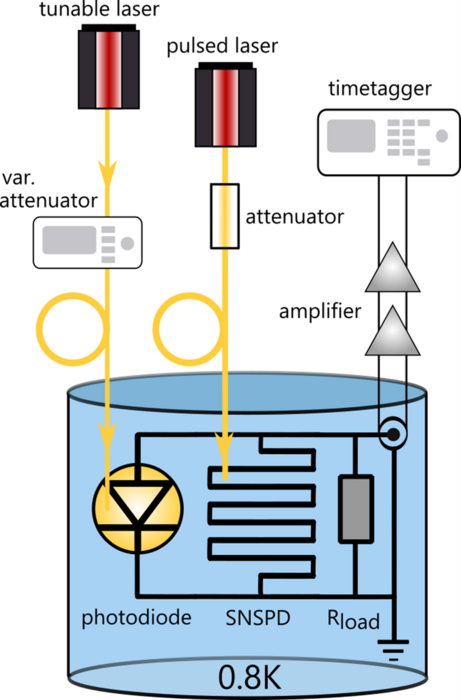In our new publication we show the operation of a superconducting single photon detector via a photodiode. Superconducting single photon detectors have become the goldstandard for single photon detection in recent years since they can achieve detection efficiencies of above 95% and show negligible dark noise. These features are vital to realise quantum photonic communication. These superconducting single photon detectors must be operated at cryogenic temperatures to enable the detection mechanism. The operation at temperatures below 4K require cooling with multiple cooling stages.
In our publication we show a new method to provide the power for the operation of superconducting detectors. Specifically, we show that we can provide the operation current for the superconducting detector with a photocurrent of a photodiode. Therefore, a photodiode is placed in the cryostat and illuminated such that a current is generated for the detector. This current is then used as the operation current for the single photon detector. The method can replace electrical connections for the detector operation. The optical supply of the detector can enable low heatloads for large scale applications since optical fibers have a significantly lower heatload then coaxial cables. The presented method shows now significant performance differences of the superconducting single photon detector in comparison to a conventional operation.
The paper is available at:

